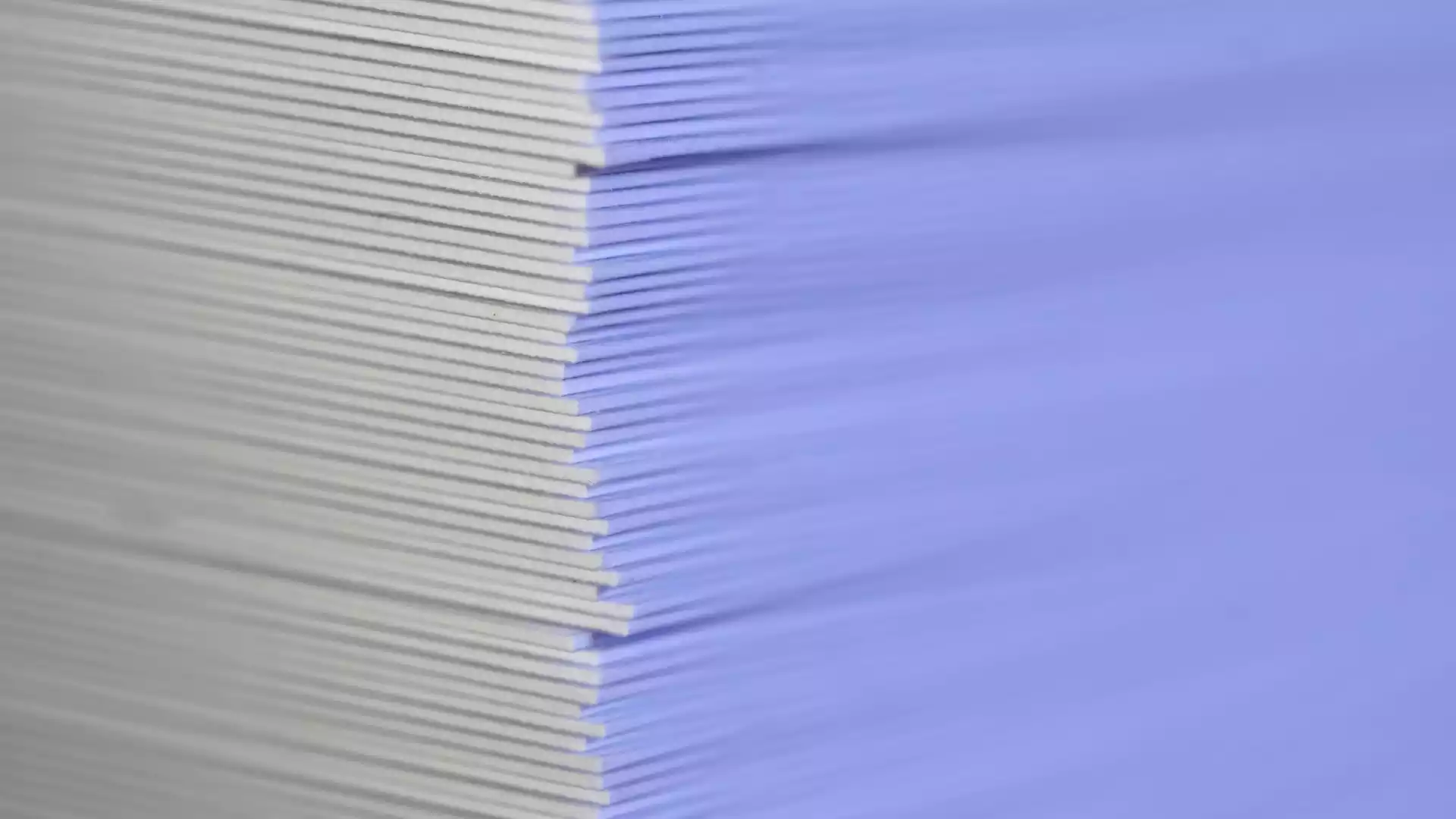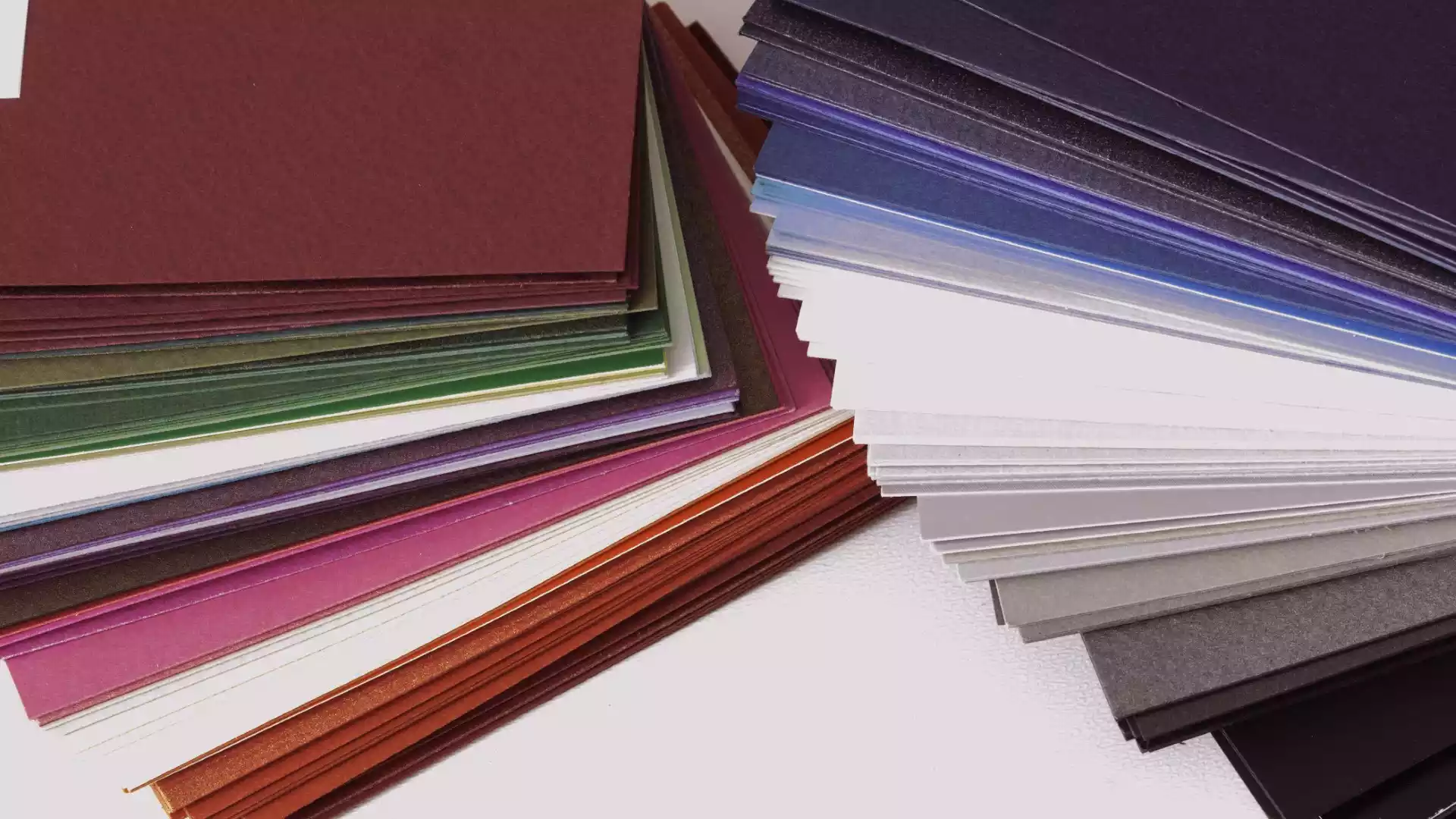Coverstock and cardstock are both types of heavy, thick paper, but they have some differences that can affect your choice depending on the project you're working on.
Similarities:
- Both are durable and thicker than regular printer, copy, or construction paper.
- Available in a wide range of colors and can have designs printed on them.
- Generally used interchangeably for various printing and craft projects.
Differences:
- Coverstock is usually textured with a protective coating or finish, making it ideal for more decorative purposes. It's often measured by thickness in points (with 1 point equaling 1/1000 inch), which indicates its rigidity or stiffness. A heavy paper with a more decorative nature, used for covers and high-quality printing projects.
- Cardstock, on the other hand, has a smoother surface and is typically measured by weight in pounds (indicating how much 500 sheets of paper weigh). This makes it suitable for many applications where a heavier paper is desired without the coverstock's specific texture or protective finish. It is a thick and durable paper, versatile for various applications including postcards, business cards, and other printing needs.
Coverstock is more often used for the covers of printed projects and other creative materials due to its texture and finish. In contrast, cardstock is used for durable items like business cards, restaurant menus, and event invitations. The choice between them can depend on the need for decorative elements and the specific feel or texture desired for the project.
Make sure you check out our cardstock printing services here.

Technical Specifications of Cardstock and Coverstock
Cardstock weight is often confusing because it's measured in pounds, but this doesn't directly correspond to the actual weight of the paper you hold. Instead, it refers to the weight of 500 sheets of uncut paper. For instance, if 500 sheets weigh 65 lbs, it's called 65 lb stock. The thickness of cardstock is measured in points, where one point equals 0.001 inches. So, 10 pt cardstock is 0.010 inches thick. Density is another factor, usually measured in GSM (grams per square meter), providing a more universal paper density metric. In North America, density is often converted to pounds or points for simplicity.
Cardstock typically ranges from 147 GSM to 640 GSM, translating to various uses, from lightweight applications like postcards and menus to heavyweight uses such as business cards and invitations. The thickness (or caliper) of cardstock contributes significantly to its application and feel, influencing the paper's sturdiness and its use in printing or crafting projects.
On the other hand, the finish and application of coverstock typically distinguish it from different materials. It's often used for the covers of documents, reports, business cards, and other items where a thicker, more durable paper is desired. Coverstock is also measured by basis weight and thickness, with specific coatings or finishes applied to create a variety of textures and appearances.
Glossary of Terms:
- Basis Weight: The weight of 500 sheets of paper in its uncut size. It's used to compare the weights of different types of paper.
- Caliper: The thickness of a sheet of paper, measured in points. One point equals 0.001 inch.
- GSM (Grams per Square Meter): is a metric measurement of paper density that offers a universal standard across different paper types.
Understanding these specifications and terms can help you choose the right paper for your project, whether for professional printing, crafting, or any other purpose where paper quality and characteristics are important.
Applications and Uses of Cardstock
Due to its thickness and durability, cardstock is popular in various crafting and printing projects. It's commonly used for:
- Invitations: Especially for significant events like weddings, where a premium feel is desired.
- Greeting Cards and Handmade Cards: Allows for a sturdy base supporting embellishments and various media.
- Scrapbooking: Standard sizes like 12" x 12" make it ideal for scrapbook layouts, offering a durable page that can hold photographs, decorations, and written notes.
- Business Cards: The weight and stiffness of cardstock give business cards a professional and substantial feel.
- Postcards and Menus: Its durability allows it to withstand handling and offers a quality feel.
- Crafting Projects: Cardstock can be folded, curved, cut, and more, making it ideal for various artistic and decorative projects.

Applications and Uses of Coverstock
Coverstock, while similar to cardstock, is often chosen for its decorative qualities and heavier weight, making it suitable for:
- Covers for Printed Projects: These are ideal for reports, presentations, and booklets where a durable and possibly textured or colored cover is needed.
- Premium Marketing Materials: These include brochures, folder covers, and high-end catalog covers, where texture and weight can make a strong impression.
- Artistic Projects: Where the paper's texture, weight, and finish can add a unique dimension to the work.
Choosing Between Cardstock and Coverstock
Choosing between cardstock and coverstock for specific projects involves considering various factors, including durability, finish, presentation quality, and the particular needs of your project. Here's a guide to help you make an informed decision:
What is Card Stock?
Cardstock is a versatile paper known for its thickness and heavy weight, making it suitable for various printed materials and projects. It typically has a smooth surface, ideal for printing high-resolution images and text. Typical uses include business cards, postcards, invitations, and brochures.
What is Cover Stock?
Coverstock is designed for decorative and design purposes, offering vibrant colors and a textured finish. It's thicker and heavier than regular paper, providing durability and a premium feel. It is commonly used for book covers, brochures, menus, greeting cards, and other creative projects where aesthetics are crucial.
Choosing the Right Option for Your Needs
- Consider the Purpose: Determine if your project needs a smooth or textured finish. Cardstock's soft surface is great for projects requiring clear and crisp printing. Coverstock's textured finishes and vibrant colors may be more appropriate for projects that demand visual appeal and creativity.
- Visual Appeal: Due to its range of colors and finishes, coverstock could benefit projects reliant on visual aesthetics, such as marketing materials or book covers.
- Durability: Both cardstock and coverstock offer greater thickness and weight than regular paper, making them both durable. Your choice should depend on the level of durability your project requires.
- Printing Method: Compatibility with your printing method is crucial. Some printing techniques may require specific paper thicknesses or finishes to ensure the best results, so it's advisable to consult with your printer or printing service provider.
To make the best choice for your project, assess the specific requirements of your project in terms of the final look and feel, the functionality of the printed piece, and how the end recipient will use it. Whether working on a professional print job, a personal craft project, or marketing materials, understanding these distinctions and considering your project's needs will guide you to the correct paper choice.






